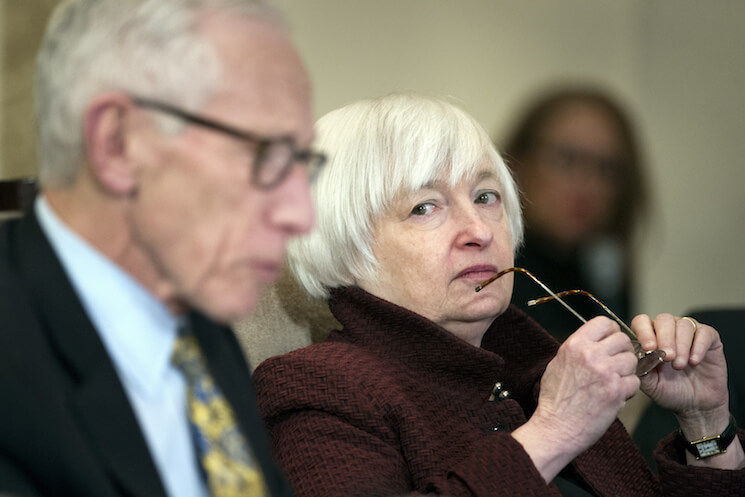An uncertain time at the Federal Reserve

Later today the Federal Open Markets Committee, the monetary policy arm of the Federal Reserve, will end its current meeting and release a statement about the course of U.S. monetary policy. The committee seems unlikely to announce any change in monetary policy, which means short-term interest rates will remain flat. But changes in the statement may give signs about changing views on the outlook for the U.S. and global economy and the impact of policy changes or international developments. With the start of a new year and a new presidential administration, two large uncertainties hang over the Federal Reserve.
The first is uncertainty about how much labor slack remains in the U.S. economy. A growing consensus holds that the economy is, if not already at full employment and potential, then very close to it. But if the economy were close to its potential growth rate, inflation would be close to 2 percent or accelerating toward it. But inflation, measured by the committee’s preferred Personal Consumption Expenditure index, is still below 2 percent. And, after stripping out volatile food and energy prices, the index seems to show inflation slowing down, as former Federal Reserve Bank of Minneapolis President Narayana Kocherlakota points out.
But perhaps the tightening labor market will push inflation upward as wage growth accelerates. The data on wage growth, however, are sending more mixed signals. Average hourly earnings for all private-sector workers grew at a 2.9 annual rate in December, a sign of accelerating wage growth. But at the same time, average hourly earnings for production and nonsupervisory workers hasn’t budged from a steady 2.5 percent annual rate since December 2015. This could mean that wage growth is tilted toward managers and other higher earners. But the Employment Cost Index also shows wage growth that isn’t accelerating. The data for the fourth quarter of 2016 shows wage and salaries growing at 2.3 percent for all workers, slightly lower than the rate in third quarter. With other measures of the labor market—such as the prime-age employment-to-population ratio—showing continuing slack, it’s far from clear the U.S. economy is very close to full potential.
The other large uncertainty is about the path of federal fiscal policy. The new Trump administration has sent signals that it wants to conduct more expansionary fiscal policy by increasing the budget deficit. The Federal Reserve is keeping an eye on fiscal policy, as it tries to understand how more expansionary policy would affect the real economy and in turn the conduct of monetary policy.
But sorting through the impact will be difficult as the fiscal policy of the administration isn’t entirely clear at the moment. A tax cut geared toward high-income households seems likely, but the exact design (never mind the timing) is unknown. During the recent presidential campaign, talk of a large infrastructure plan had many analysts convinced that a big boost to aggregate demand was coming. But details remain sparse and the details that do exist indicate the plan is less about direct government spending and more about private-sector inducements through tax credits. Such a plan seems unlikely to increase aggregate demand in the economy as much as direct purchases as it would not spur as much new investment and construction.
In the face of these uncertainties, it makes sense for the Fed to stand pat for now. This is even more true considering it’s unclear the extent to which the administration’s new policies will reduce economic growth. Caution, at least for now, is the best course.
